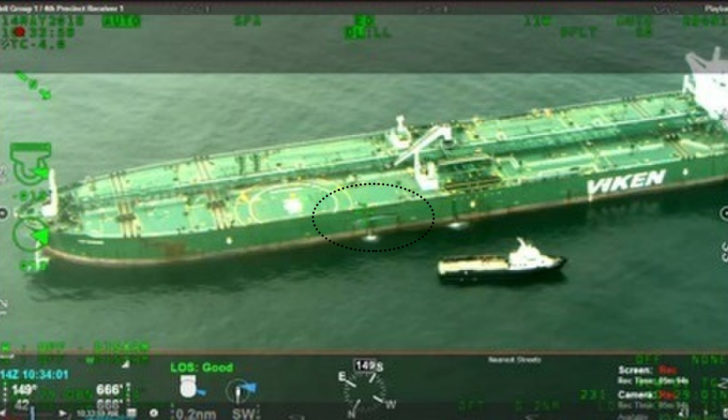The 91-foot scalloper Polaris out of New Bedford, Mass., is lucky that its encounter with the Bahamian-flagged 820-foot oil tanker Tofteviken didn’t turn out worse than it did, according to the National Transportation Safety Board.
On May 12, 2018, the Polaris with captain, mate and five crewmen had left the Mid-Atlantic Scallop Access Area and was on a northeasterly course back to New Bedford after taking its quota of scallops. The mate was alone on the bridge. The Polaris was on autopilot and making 10-knots.
The Tofteviken was traveling from Point Tupper, Nova Scotia to a refinery in Linden, N.J. with a partial load of crude oil. The third mate was alone on watch. The Tofteviken was on autopilot. The speed was about 10.5 knots.
Visibility was good, wave heights were 2 to 4 feet and winds were light from the southwest.
Both vessels had radar displays, including AIS, and radios, which, considering the favorable weather conditions should have been enough to avoid what happened at 1913.
The Polaris mate checked his radar a couple of times but didn’t see another vessel. Other than that he was busy cleaning the wheelhouse, which was standard practiced when returning to port. He left the wheelhouse once to get cleaning supplies.
The Tofteviken’s third mate noticed two radar contacts between 1850 and 1855 on the port bow. The closest, the Polaris, was 8 miles away. She thought the Polaris had altered course to starboard but failed to plot the Polaris on Automatic Radar Plotting Aid, which would have shown closest point of approach and its time. (The captain’s order had been that ARPA was to be used for collision avoidance situations.)
Then the able-bodied seaman also assumed lookout duties. He, like the third mate, believed the Polaris had changed course. (Later, playing back electronic chart information showed there had been no change in course.) At this time the Polaris was 3.5 miles away. Nobody thought to get on the phone and call the Polaris.
At about 1910 the distance separating the two vessels was 0.8 miles when the chief engineer, who was on the bridge talking to the captain but at a spot where they could not see what was happening forward of the vessel, came to look out the windows facing forward, saw the Polaris and called out “What are you doing?” That got the captain’s attention; he ordered hand steering and hard starboard. By then it was too late and seconds later the vessels collided.
The mate on the Polaris was polishing the aft control station propulsion levers when he heard a “ping” sound. (That was the “bird” or paravane on the port side outrigger contacting the Tofteviken’s hull.) He turned around and saw a wall of green in front of him, just before the bow of the Polaris struck the tanker’s port side.
There were no injuries or pollution. The Tofteviken’s port side plating had a 40' x 2' gash and multiple scrapes down the ship’s side. The Polaris’ bow was torn and mangled. The main deck was fractured, buckled and warped. The portside outrigger was bent toward the back of the boat. Damage to both vessels came to $716047. Both continued under their own power

Summary
The National Transportation Safety Board’s marine accident brief, which was reported out on June 28, 2019, determined the probable cause of the collision was “the failure to maintain a proper lookout by the mate on the fishing vessel and the failure to identify the risk of collision by the third mate on the tanker.”
The NTSB has two recommendations: First that “non-navigation routines should never interfere with the primary task of a watch stander or bridge team member to maintain a proper lookout. Should performance of another task or duty be necessary, an extra lookout should be posted.” Second, that “early communication can be an effective measure in averting close quarters situations. The use of VHF radio can help to dispel assumptions and provide operators with the information needed to better assess each vessel’s intentions.”







